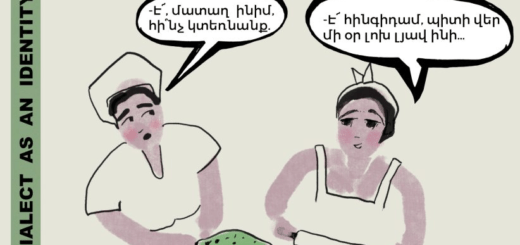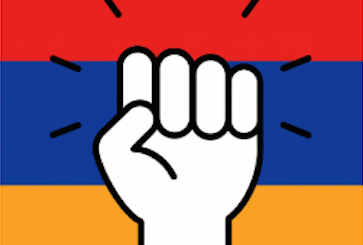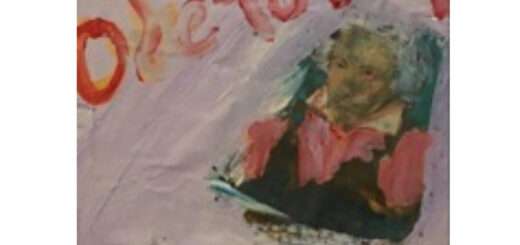The most dangerous wine in the world

Meet the Armenian winemakers who are risking their lives to resurrect reds from at-risk vines.
In September 2020, just days before the grape harvest was due to begin in eastern Armenia, neighbouring Azerbaijan launched a military offensive in the region, another deadly skirmish in a bitter, long-running border dispute.
Filmmaker Jason Wise, best known for his Somm series of documentaries, was there at the time, making a film about father-daughter winemakers Vahe and Aimee Keushkerian, who were due to pick grapes from old bush vines near a village directly in the line of fire.
In the film, Cup of Salvation, we watch as the Keushkerians conduct tense negotiations before being given the all-clear for harvest to begin. The camera then follows them as they don flak jackets and drive out to the village.
“I do better in times of difficulty than in times of peace,” says Vahe, confidently. Long-suffering Aimee isn’t quite so brazen. “My father wants to build a bomb-proof cellar,” she says. “It’s a little surreal.”
Cup of Salvation is screening as part of the Armenian Film Festival, running in Sydney from August 8-17 and Melbourne from August 29-30 (it’s also available to stream on Amazon Prime and Apple TV). After the Sydney screening, Vahe Keushkerian will present a tasting of his wines – a rare opportunity as they are not available in Australia.
The history of wine in Armenia dates back more than 6000 years. Archaeological evidence for the world’s oldest winery was discovered in a cave here called Areni-1: the vats and pots in the winery, which have been radiocarbon dated back to 4000BC, contain residue of a red grape variety – also called areni – that is still grown in the region today.
“We have an ancient wine culture,” says Armenian-born, Melbourne-based wine importer Ardaches Jokaklian, who started shipping wines from his homeland in 2021 through his business Hye Kini. “But we are not as well-known as our neighbours in Georgia.”
This is because, says Jokaklian, for much of the 20th century his country’s winemaking tradition was suppressed by Stalin (a Georgian), who decreed that Armenia would instead use its grapes to make brandy. As a result, it’s only in the past three decades, since the breakup of the USSR and the establishment of Armenia as a republic, that visionaries like the Keushkerians have started to seek out old plantings of the country’s 400 indigenous grapes such as areni – and establish new plantings of international varieties like syrah and chardonnay – to make wine from them again.
“I’m of the generation defining what our country’s new identity is,” says Aimee. “And now we’ve adopted wine as our identity.”
Not content with harvesting grapes from a war zone in his own country, though, Vahe then spends the second half of Cup of Salvation pursuing another crazy idea.
Armenia’s southern neighbour is Iran, which also has an ancient grape growing and winemaking heritage. There is archaeological evidence of wine grapes here more than 7000 years ago, and, before the Islamic revolution of 1979, there were 300 wineries in the country. Since 1979, all wine production and consumption in Iran has, of course, been banned. While most of Iran’s vineyards are now used to grow table grapes, there are some remnant wine-grape vines growing in remote mountainous villages. It’s these old vineyards that Vahe hopes to find when he flies to Tehran, a stripped-back camera crew in tow, with a dream to make the first Iranian wine of the modern era.
Before he leaves, the camera captures Vahe and his daughter discussing the trip, looking at a map of the region, talking about how the trucks laden with wine grapes will go back across the border.
“I’ll call you from jail,” jokes Vahe. “A little danger is fine, I don’t mind.”
Aimee laughs nervously. And we spend the rest of the film watching her father’s dream become reality.
Need to know
- Winemaker Vahe Keushkerian will be in Sydney on Sunday 10 August for a special afternoon screening of Cup of Salvation at the Armenian Film Festival, followed by a tasting of his wines.
- For more info and to book tickets: armenianfilmfestival.
com.au
The taste of Armenia
2022 Malahi White Dry [Armenia]
This very modern-styled white was made by the Maran winery in Vayots Dzor, the same region as the famous Areni-1 cave, using the French grape aligoté blended with the local white grape voskehat, and the white juice of the red areni variety. Fermented in a combination of barrels and tanks, it’s fragrant, floral, and zesty, with a fine, powdery acidity and a lovely mouthwatering quality. $40
2022 Jraghatspanyan Garan Dmak [Armenia]
Jraghatspanyan is an old winery in the western Armavir region, now run by three brothers. Garan dmak is a white grape whose name means “fat tail” and there’s definitely a wonderful textural richness to the wine, along with a delicious freshness. Really intriguing and different – as is the winery’s 2021 Special Selection Red ($50), an intensely perfumed and fruity wine – think spice bazaar and sour cherries – made from the tigrani grape. $45
2022 Kraki Ktor Syrah Volcanic [Armenia]
As well as producing wines using local grapes, the large Karas winery (named after the Armenian word for the clay amphorae traditionally used as fermentation vessels) also make wines from international varieties such as this syrah (shiraz) released under the more experimental Kraki Ktor label. Growing in the volcanic soils of the Ararat Valley, it’s peppery, gamey, intense and sinewy. Very good. $47
Imported by hyekini.com.au





